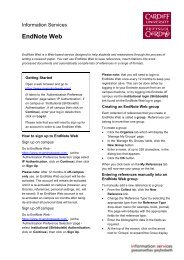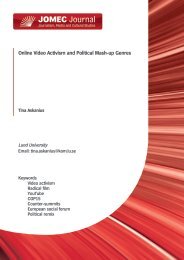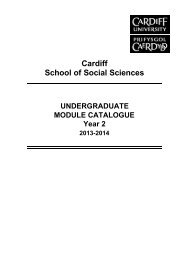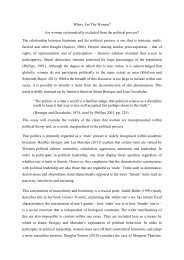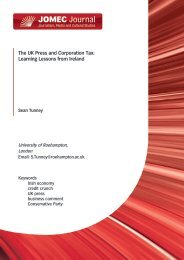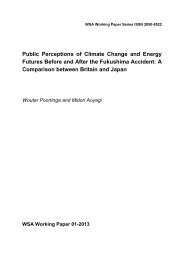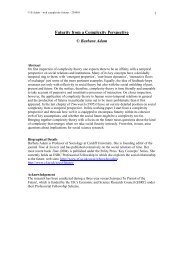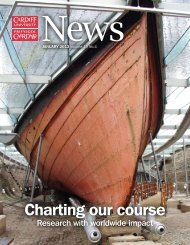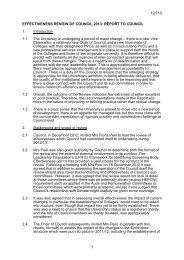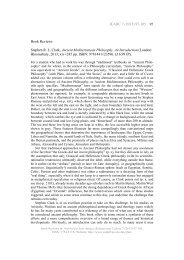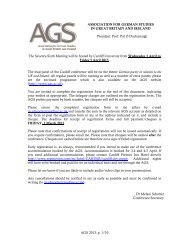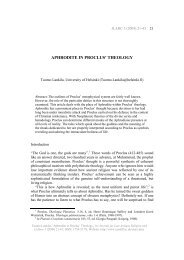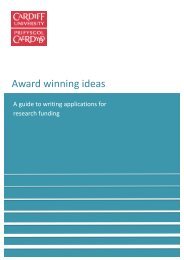Our 'Star' performer - Cardiff University
Our 'Star' performer - Cardiff University
Our 'Star' performer - Cardiff University
You also want an ePaper? Increase the reach of your titles
YUMPU automatically turns print PDFs into web optimized ePapers that Google loves.
A new approach to tackling cancer<br />
Research Excellence<br />
Some of the world’s leading cancer experts descended on<br />
South Wales to hear how a new cancer stem cell approach<br />
could better target cancer.<br />
Hosted by Sir Terry Matthews, the<br />
international three-day ‘Targeting<br />
Cancer Conference’ was held at the<br />
home of the 2010 Ryder Cup, The<br />
Celtic Manor Resort in Newport.<br />
The conference was dedicated to the<br />
theme of Cancer Stem Cells where<br />
the Director of the <strong>University</strong>’s<br />
European Cancer Stem Cell Research<br />
Institute (ECSRCI) Professor Alan<br />
Clarke, unveiled the Institute’s new<br />
approach to tackling cancer.<br />
Sharing the team’s latest findings,<br />
Professor Clarke outlined how the<br />
<strong>University</strong>’s cancer stem cell concept<br />
might be used to target cancer, and in<br />
the long-term improve the prognosis<br />
for patients and develop new cancer<br />
therapies.<br />
“The Research Institute will investigate<br />
the possibility that therapies aimed at<br />
cancer stem cells alone will offer a<br />
better success rate.”<br />
Professor Clarke said: “Cancer<br />
stem cells account for only a small<br />
proportion of cells in a tumour.<br />
However, they could be crucial to the<br />
way tumours form, grow and spread.<br />
“The Research Institute will<br />
investigate the possibility that<br />
therapies aimed at cancer stem cells<br />
alone will offer a better success rate<br />
for cancer sufferers and will, we hope,<br />
markedly improve survival rates.”<br />
Professor Alan Clarke<br />
‘Switch-flipping’ stem cell mechanism could<br />
lead to new breast cancer therapies<br />
The discovery of a pathway that helps stem cells grow into different<br />
types of breast tissue by experts from the <strong>University</strong>’s European<br />
Cancer Stem Cell Research Institute could lead the way to new<br />
treatments for aggressive breast cancer.<br />
in normal cells, changing the<br />
number parallel basal cells and<br />
perpendicular luminal cells that<br />
were produced.<br />
The pathway allows stem cells to<br />
flip their orientation of cell division,<br />
switching their offspring to form two<br />
distinct tissues found in the breast.<br />
Some aggressive breast cancers<br />
use this mechanism to control the<br />
orientation of cancer cell division,<br />
so it could be a promising target for<br />
future drug development.<br />
Dr Matt Smalley from the European<br />
Cancer Stem Cell Research Institute,<br />
said: “Current theories suggest that<br />
there may be similarities between the<br />
behaviour of normal adult stem cells<br />
and cancer cells.<br />
“By better understanding the biology<br />
of adult stem cells scientists can<br />
better understand the behaviour of<br />
cancer cells and identify new targets<br />
for therapy.”<br />
The mammary epithelium consists<br />
of two main types of cells: luminal<br />
epithelial cells, which line the ducts<br />
and form the milk-secreting cells of<br />
the alveoli, and basal myoepithelial<br />
cells, which squeeze milk along the<br />
ducts during lactation.<br />
Basal stem cells are important during<br />
early breast development because<br />
they generate the different cell<br />
types in the mammary epithelium,<br />
through the expression of an enzyme<br />
called Aurora A. In this study, the<br />
researchers investigated how the<br />
enzyme Aurora A controls the<br />
formation of new cells in the breast.<br />
Dr Smalley’s team identified for the<br />
first time a link between Aurora A<br />
and a signalling pathway known to<br />
regulate the behaviour of stem cells,<br />
called the NOTCH pathway. They<br />
found that Aurora A was able to<br />
control the direction of cell division<br />
in the breast by triggering the<br />
NOTCH signalling pathway.<br />
The researchers found that for basal<br />
stem cells to maintain populations of<br />
basal and luminal cells, cell divisions<br />
in the basal layer of the breast needed<br />
to be parallel, which occurred when<br />
NOTCH signalling was blocked.<br />
But they discovered that basal cells<br />
can also contribute to the luminal<br />
layer. Aurora A activated NOTCH<br />
signalling in the dividing basal cells,<br />
which caused their orientation to<br />
switch from parallel to perpendicular.<br />
The researchers were able to<br />
chemically control the signalling<br />
produced by the NOTCH pathway<br />
Dr Smalley believes that some<br />
aggressive breast cancers have<br />
re-activated this mechanism to<br />
control the orientation of cancer cell<br />
division, and that its discovery could<br />
lead to new treatments for breast<br />
cancer:<br />
“If we can block this mechanism<br />
in breast cancer tumours, this<br />
could cause cells to try to divide in<br />
multiple directions at the same time,<br />
resulting in catastrophic disruption<br />
of genetic material and cell death.<br />
“<strong>Our</strong> study suggests that drugs<br />
which can target this signalling<br />
mechanism could cause these cells<br />
to literally tear themselves apart,<br />
leading to better treatments for<br />
aggressive breast cancer in the<br />
future,” he added.<br />
9



